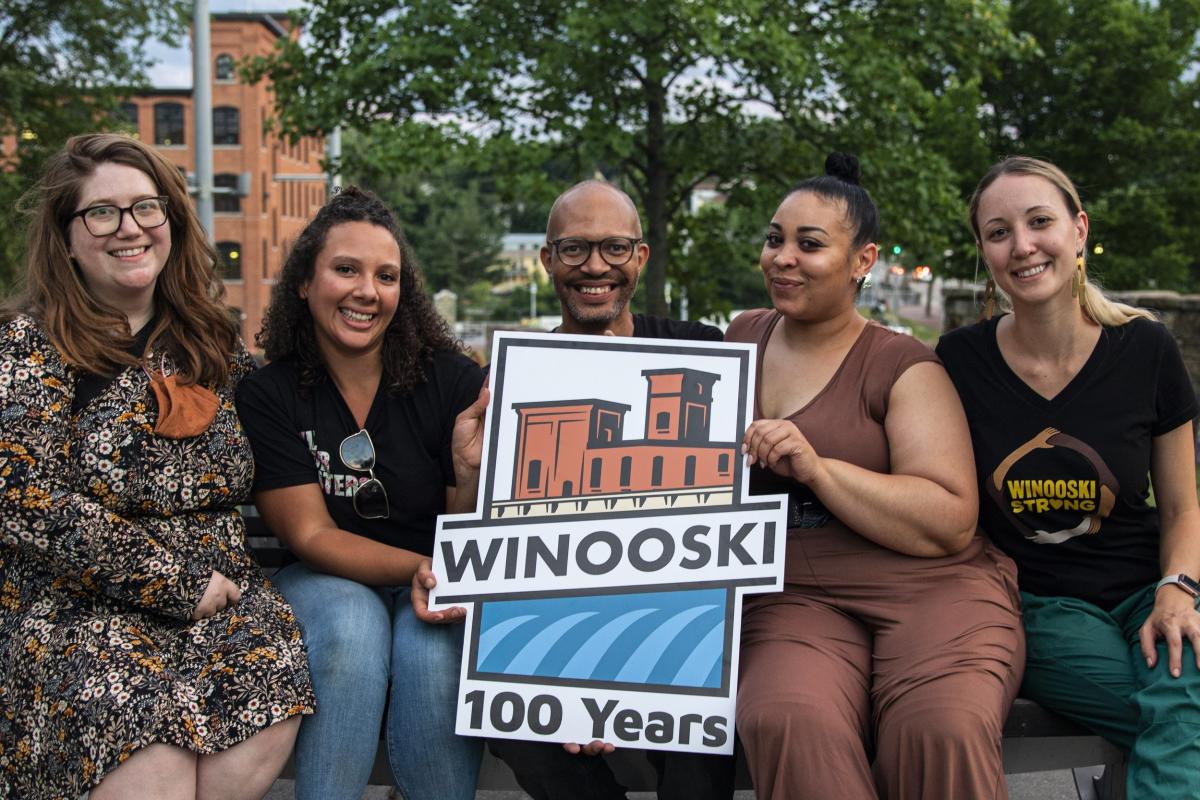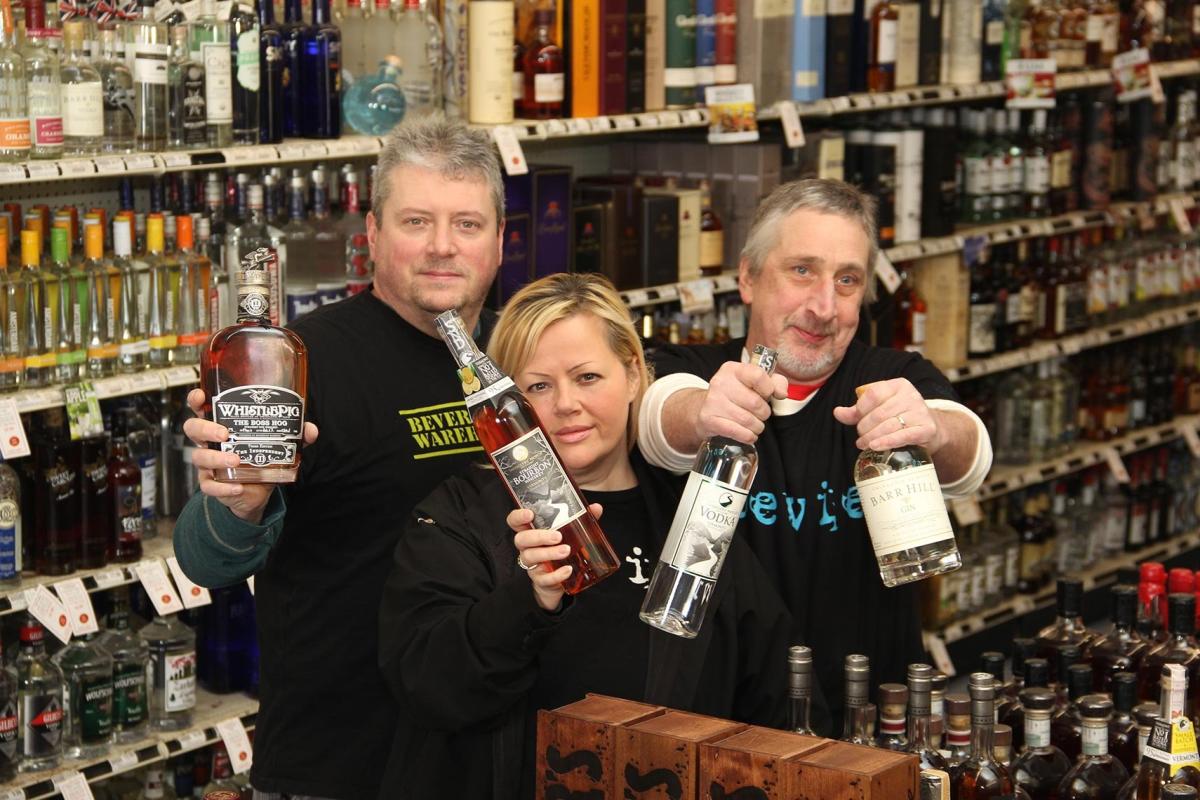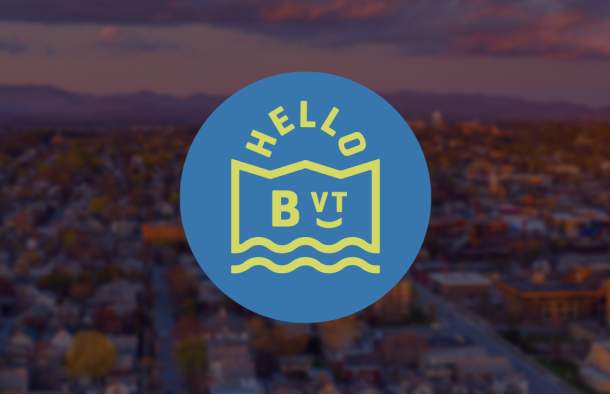
Photo Courtesy of City of Winooski
The City of Winooski is turning 100 years old in March. Burlington’s small yet mighty neighbor to the north might cover a mere 1.4 square miles, but it packs a punch, ranking number one in population density for northern New England and holding the distinction as the most diverse area in Vermont. For over a century, this stand-out city has attracted people from across the globe who come in search of opportunity and a better life, shaping the community’s rich, multicultural character. Winooski, which means onion, or leek, in Abenaki, is situated on the falls of the Winooski River that once powered the textile mills and the industry that defined the city for generations. While it has seen ebbs and flows of prosperity, several decades of revitalization have prompted economic growth and a renewed interest in the Onion City.
Today, Winooski’s lively downtown, burgeoning restaurant and bar scene, and creative, international buzz have dubbed it the Brooklyn of Burlington. But the comparison irks some locals, along with the myth that the vitality and diversity of the city are somehow new. With the centennial around the corner, this is the perfect occasion to set the record straight and highlight how Winooski’s vibrant present reflects its dynamic past, making the city so unique.
TODAY & YESTERDAY

Photo Courtesy of City of Winooski
The Winooski Bridge is the perfect vantage point for viewing downtown. One can watch the steel river roll west towards Lake Champlain, and take in the prominent brick facades of the historic Champlain and Woolen Mills flanking the bridge. This critical connector between Burlington and Winooski feeds into the rotary, the main thoroughfare humming with the constant flow of traffic. Eclectic shops, cafés, restaurants, and bars edge the rotary capped by the iconic Winooski Block on the north. At the heart of it all sits Rotary Park, a public green space where several events are held each year. The annual Waking Windows music festival builds its main stage in the rotary every May, injecting Winooski with an extra dose of energy. Since it started in 2011, Waking Windows has grown along with the city from a small, underground event to a multi-venue happening vaunted for its edgy lineup of music and art.

Winooski Falls in 1907. Photo courtesy of Library of Congress
Winooski’s youthful reputation is fitting for a city 100 years young—most New England towns are much older. But the whole truth is that Winooski Falls, as the city was known, was originally part of Colchester and existed as a municipality long before 1922. “Colchester was very much a classic Yankee town,” says Joe Perron of the Winooski Historical Society, “whereas Winooski at the turn of the century had a huge influx of immigrants who were coming to take employment in the mills and other industries that were here.” This contrast in demographic caused a fracture between the two and led Winooski to break off from its rural counterpart in March 1922. With that in mind, the 100th anniversary is essentially a celebration of Winooski’s urban identity.
THE HERITAGE MILL MUSEUM & NEW AMERICANS

Photo courtesy of the Heritage Winooski Mill Museum
Anyone interested in learning more about the history of Winooski can take a two-minute walk from the bridge to the Champlain Mill. There visitors can explore the Heritage Winooski Mill Museum to learn about the early textile industry and view artifacts from the bygone era. Some of the most compelling relics are the black-and-white photographs capturing the faces of the men, women, and children who spent their days and whole lives working inside the walls of the mill.
Winooski, aptly called Vermont’s City of Opportunity, has long been a draw for immigrants looking to build a new life. In the early 19th century, it was nicknamed “Little Canada” because scores of French Canadians came to work in the mills. “There were so many people speaking French in the city,” says Perron, “that stores in downtown Winooski would advertise [for] bilingual help.” Workers from abroad continued to flock to the city; the Irish came in the 1840s with the building of the railroad, and from the Civil War into the early 1900s, a wave of immigration brought a “panorama of immigrants,” says Perron. Syrians, Lebanese, Armenian, Polish, and Italians made Winooski their home. In the last forty years, the city’s proximity to Burlington has made it a critical location for refugee resettlement. Cambodians, Vietnamese, Bhutanese, Iraqis, Sudanese, and many more have found a place where their families can settle, assimilate, and be welcomed.

Workers at the American Mill in Winooski, 1900. Some were as young as 13 years old.
Photo by Lewis Hine, courtesy of Library of Congress.
LOCAL FLAVORS & THE BEVIE
That influx of immigration has infused the local dining scene with a diverse range of international flavors. Some newcomers just beyond the rotary include Morning Light Bakery on East Allen Street, which opened in 2019, specializing in Hong Kong–style buns. Their menu of boba teas make a tasty accompaniment to the from-scratch pastries. If you’re looking for a proper lunch or dinner, the Fusion Café has a variety of authentic dishes from Nepal, Vietnam, India and more. Bhola Dhaurali opened the establishment in October of 2021. Born in Bhutan, raised in Nepal, Dhaurali moved to the U.S. in 2009 and brings his love for different cuisines to the table. He believes that a fusion concept fits the community well. “Winooski is growing bigger,” says Dhaurali. “It’s a small city with a lot of opportunities to grow the business.”

The Archives, Photo by Bear Cieri
We would be remiss to explore Winooski without suggesting a drink. For a small city, there is no shortage of good bars to choose from. Pop into one of the old standbys like Mule Bar, Monkey House, Archives, and McKees Pub along the rotary. Four Quarters Brewery is the new kid on the block, that opened during the pandemic. It boasts a beer garden that offers lots of space to sip and stay socially distant. At 1 East Street is the Beverage Warehouse, a local institution where people have come for four decades to buy wine and beer (more on that below). But another look to Winooski of yesteryear shows just how significant a role alcohol has played in its history and culture.
Before Prohibition was enacted on a national level, Vermont had its own prohibition. Towns had the option to vote on whether or not to serve alcohol. Can you guess where Winooski stood on the matter? Aye. Downtown bars became a magnet for the thirsty, feisty, and down-and-out. Enlisted soldiers camped at Fort Ethan Allen would descend on nearby Winooski looking to blow off steam with a couple of drinks. “That added a lot of color to the community,” says Perron, “There is this dichotomy in the 20th century of Winooski history—of the very highest immigrant story with these families who are God-fearing and trying to do their best for their families . . . And then there are these soldiers who are coming into downtown Winooski trying to find the red-light district.”

Jen Swiatek and the Bevie team with Vermont Spirits. Photo by Jason Dennis
Lucky for all of us, alcohol’s reputation has redeemed itself and now producers of Vermont beer, cider, wine and spirits are praised the world over. Legends like Heady Topper and Lawson’s Sip of Sunshine can be tough beers to come by, even if you live in-state, but Winooski’s own Beverage Warehouse—better known as the Bevie—is the depot to find whatever bottle or keg you fancy.
Owner Jen Swiatek took over the business from her parents in 2003, having worked there since she was 15. “Every week, I will see customers who have been coming in for decades who say, ‘Say hi to your mom and dad for me,’ even though my folks have been retired for close to twenty years.” When asked about the community she grew up in, Swiatek reflects, “Winooski itself is a treasure chest of gems, and its gems are people. We are small enough to recognize and appreciate each other. It feels like an extended home on every block.”
EXPLORE & CELEBRATE

Daniel Schechner’s “100+ Faces of Winooski” project. Photo courtesy of the City of Winooski.
The people of Winooski are the centerpiece of the city’s Legacy Campaign and the big fete in March. Photographer Daniel Schechner has partnered with the Celebration Committee to produce 100+ Faces of Winooski, a portrait exhibition of residents to be displayed in downtown storefronts. Other events to kick off the centennial include a new exhibit at the museum called Mill to Mall: Historic Space Reimagined about the Champlain Mill shopping center that occupied the building from 1981 through the early 2000s. Self-guided walking tours of the city’s landmarks will be available through the Winooski Historical Society. Block by block there will be something new and old to discover, and all are welcome. After all, welcoming is what Winooski does best.


